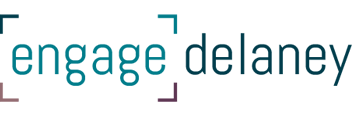Guide to Safer Language
by Jessica Delaney, Principal, Engagement + Strategic Communications
The language of a few years ago no longer feels appropriate. In fact, it can often feel that the language of a few months ago no longer reflects societal norms. As facilitators, we are often held to a higher standard to ensure we use and model safe language, but sometimes it’s hard to know the safest language to use. The Mental Health First Aid course provides a publicly available reference to safer language when talking about mental health.
How about co-designing your language? In your next meeting, consider asking participants to take a minute or two to reflect on unsafe language and what a safer alternative is, then, as a group, co-design respectful or safer language for your meeting. For example, people might refer to “the homeless” and a safer way of communicating would be “people experiencing homelessness”. Sometimes people will refer to “addicts” and a safer way would be “people who use substances”. Using people-centric language is generally safer and more respectful than characterizing people by one part of who they are. By spending time – likely no more than 10 minutes – early in a session about the intention and use of language, we can work to create safer spaces and level up how we use language when talking about people, groups, or communities.
We’ve put together a Guide to Safer Language to help you on your journey which you can download here: Delaney Guide to Safer Language.




